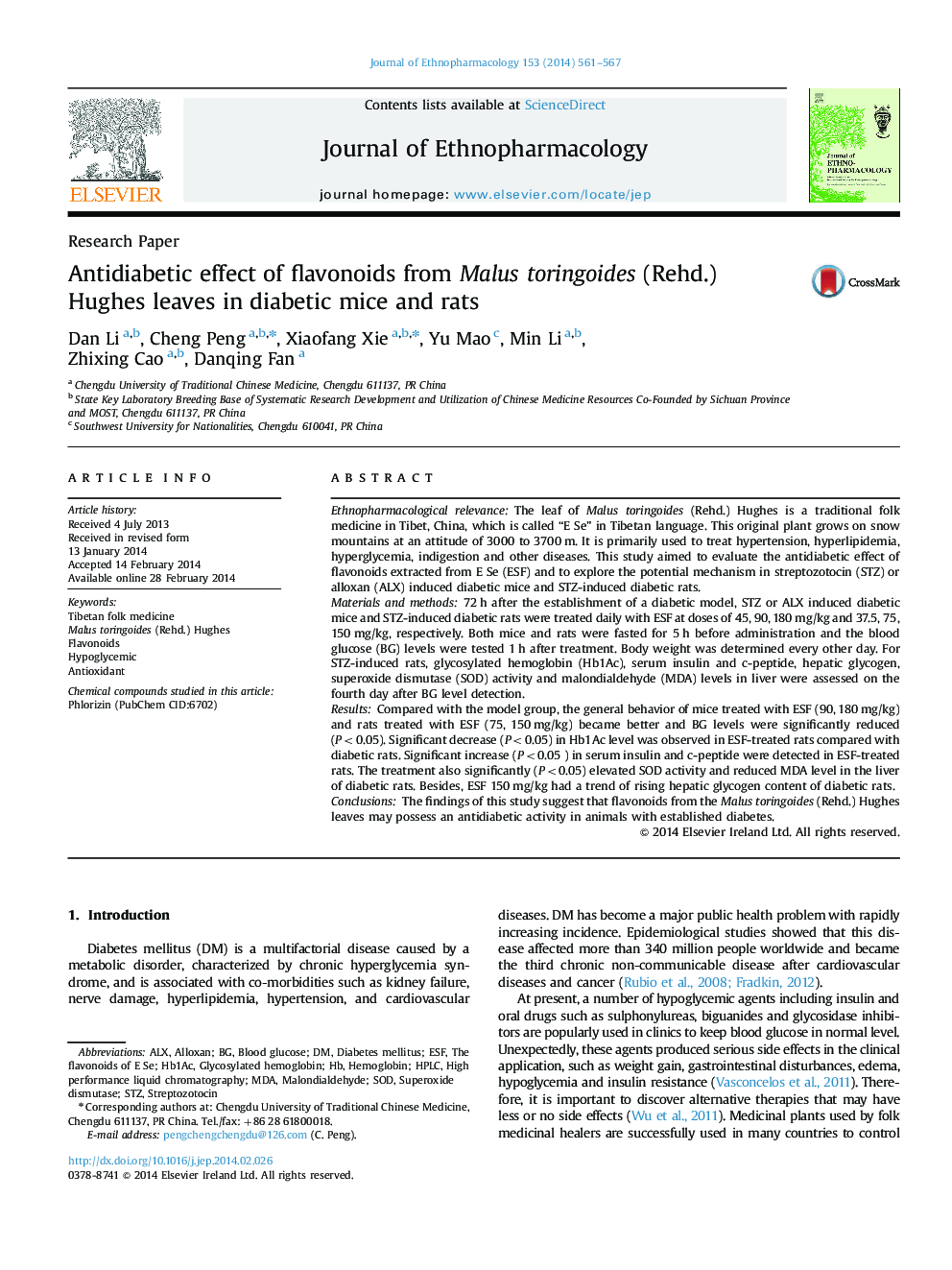| Article ID | Journal | Published Year | Pages | File Type |
|---|---|---|---|---|
| 2545083 | Journal of Ethnopharmacology | 2014 | 7 Pages |
Ethnopharmacological relevanceThe leaf of Malus toringoides (Rehd.) Hughes is a traditional folk medicine in Tibet, China, which is called “E Se” in Tibetan language. This original plant grows on snow mountains at an attitude of 3000 to 3700 m. It is primarily used to treat hypertension, hyperlipidemia, hyperglycemia, indigestion and other diseases. This study aimed to evaluate the antidiabetic effect of flavonoids extracted from E Se (ESF) and to explore the potential mechanism in streptozotocin (STZ) or alloxan (ALX) induced diabetic mice and STZ-induced diabetic rats.Materials and methods72 h after the establishment of a diabetic model, STZ or ALX induced diabetic mice and STZ-induced diabetic rats were treated daily with ESF at doses of 45, 90, 180 mg/kg and 37.5, 75, 150 mg/kg, respectively. Both mice and rats were fasted for 5 h before administration and the blood glucose (BG) levels were tested 1 h after treatment. Body weight was determined every other day. For STZ-induced rats, glycosylated hemoglobin (Hb1Ac), serum insulin and c-peptide, hepatic glycogen, superoxide dismutase (SOD) activity and malondialdehyde (MDA) levels in liver were assessed on the fourth day after BG level detection.ResultsCompared with the model group, the general behavior of mice treated with ESF (90, 180 mg/kg) and rats treated with ESF (75, 150 mg/kg) became better and BG levels were significantly reduced (P<0.05). Significant decrease (P<0.05) in Hb1Ac level was observed in ESF-treated rats compared with diabetic rats. Significant increase (P<0.05 ) in serum insulin and c-peptide were detected in ESF-treated rats. The treatment also significantly (P<0.05) elevated SOD activity and reduced MDA level in the liver of diabetic rats. Besides, ESF 150 mg/kg had a trend of rising hepatic glycogen content of diabetic rats.ConclusionsThe findings of this study suggest that flavonoids from the Malus toringoides (Rehd.) Hughes leaves may possess an antidiabetic activity in animals with established diabetes.
Graphcial abstractFigure optionsDownload full-size imageDownload high-quality image (126 K)Download as PowerPoint slide
